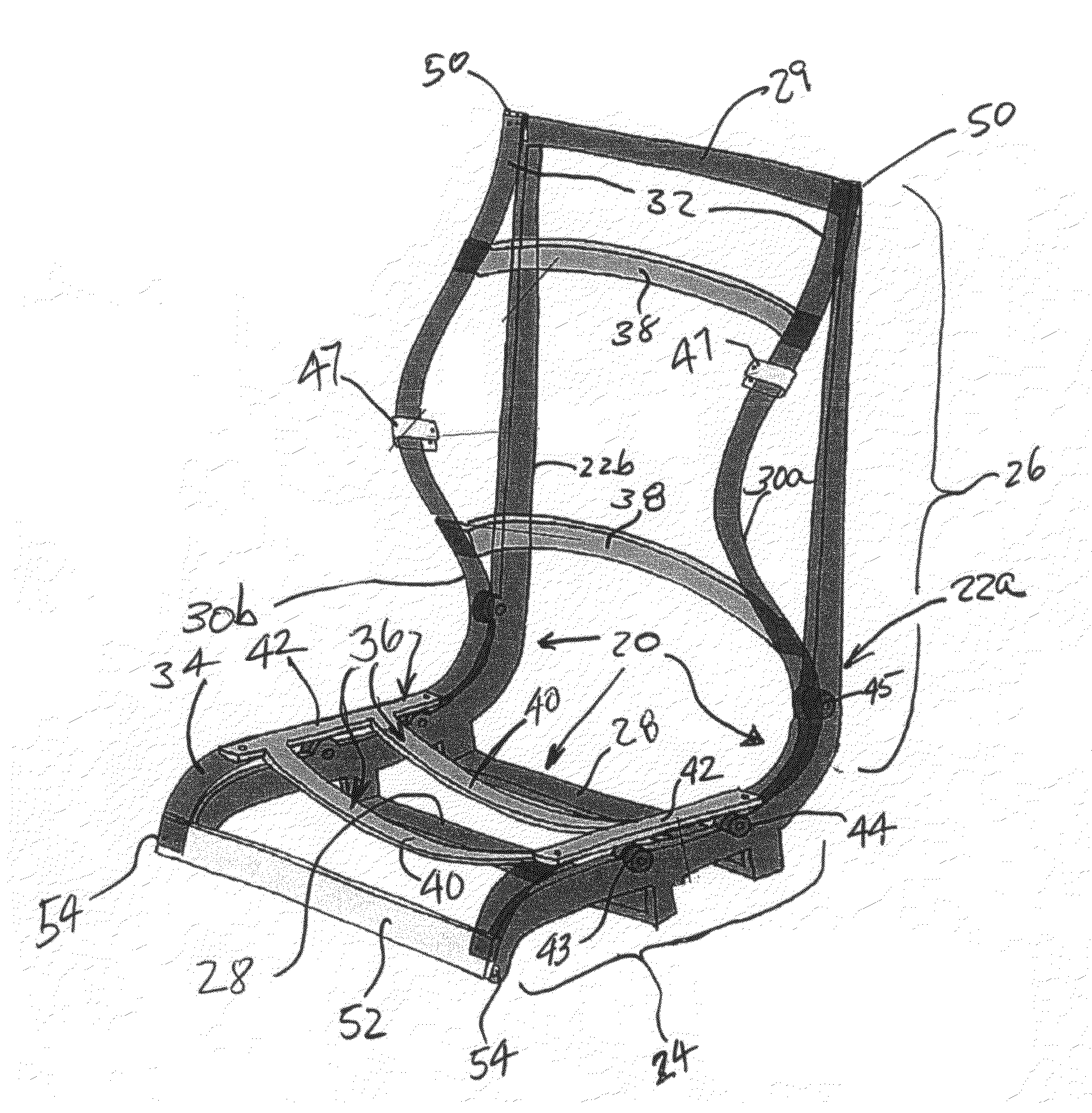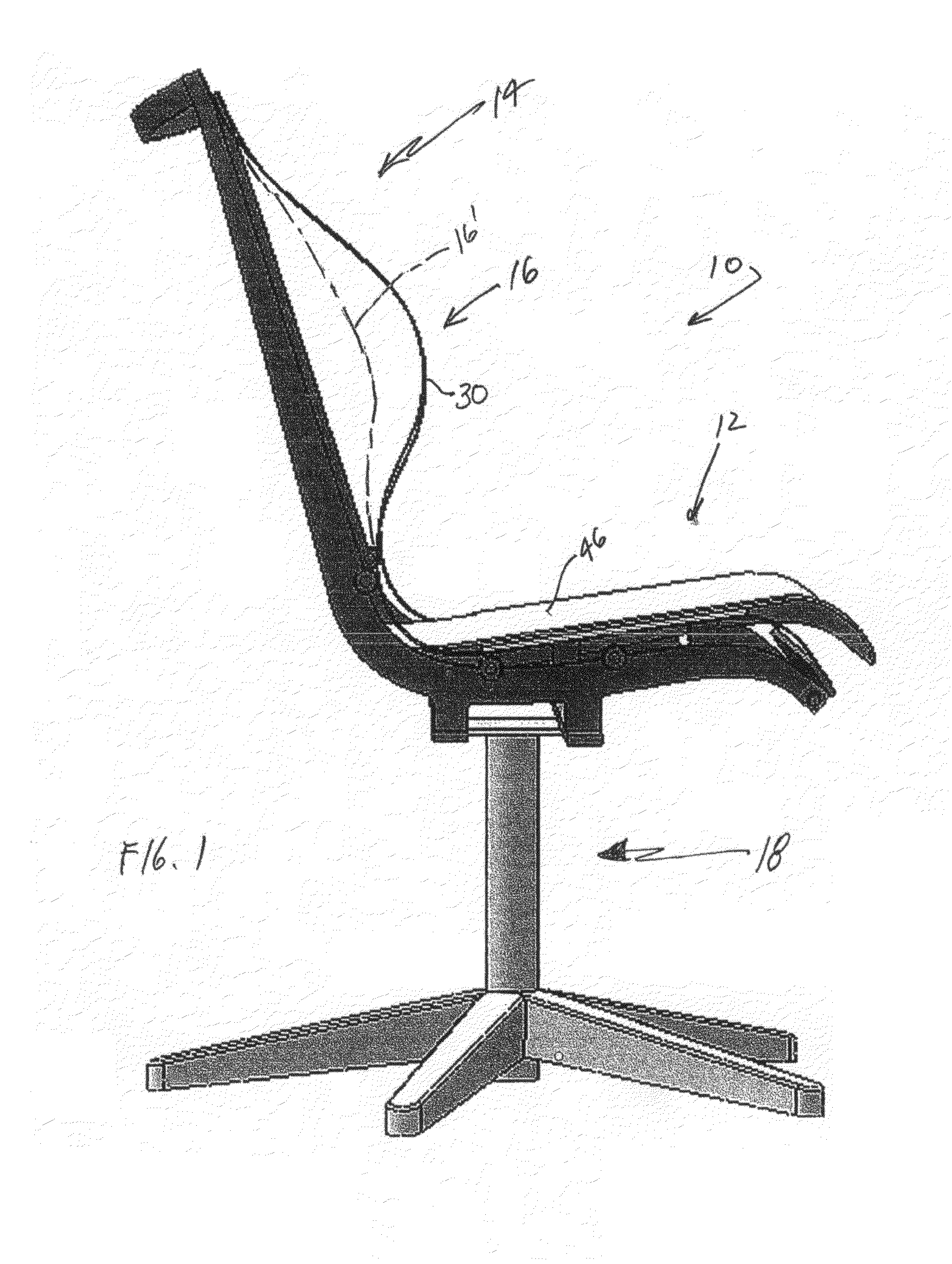Ergonomic adjustable chair
a technology of adjustable chairs and adjustable arms, which is applied in the field of ergonomic adjustable chairs, can solve the problems of unfavorable seat back comfort, and unfavorable seat back comfort, and achieve the effect of seat back comfor
- Summary
- Abstract
- Description
- Claims
- Application Information
AI Technical Summary
Benefits of technology
Problems solved by technology
Method used
Image
Examples
Embodiment Construction
[0036]FIG. 1 illustrates, in side view, the mechanical aspects of an office or task chair 10 having a mechanism embodying principles of the invention. The chair has a seat region 12 and a back region 14 extending heightwise relative to the seat. As may be desirable in office chairs and other task chairs where long term support for the user's back is to be provided, the chair mechanism is configured to form a lumbar support defined by a forwardly projecting bulge 16 at a height that will cause the chair back to bear firmly, but comfortably, against the user's lumbar region. When the user sits in an upright position the lumbar support region 16 is effective to configure the chair back to support the lumbar region of the user. FIG. 1 shows, in solid, the degree of bulge 16 of profile bands 30 (described below) and, in phantom at 16′, the profile of the seat back that extends, between the profile bands and actually contacts the user's back. As will be described, the invention enables th...
PUM
 Login to View More
Login to View More Abstract
Description
Claims
Application Information
 Login to View More
Login to View More - R&D
- Intellectual Property
- Life Sciences
- Materials
- Tech Scout
- Unparalleled Data Quality
- Higher Quality Content
- 60% Fewer Hallucinations
Browse by: Latest US Patents, China's latest patents, Technical Efficacy Thesaurus, Application Domain, Technology Topic, Popular Technical Reports.
© 2025 PatSnap. All rights reserved.Legal|Privacy policy|Modern Slavery Act Transparency Statement|Sitemap|About US| Contact US: help@patsnap.com



